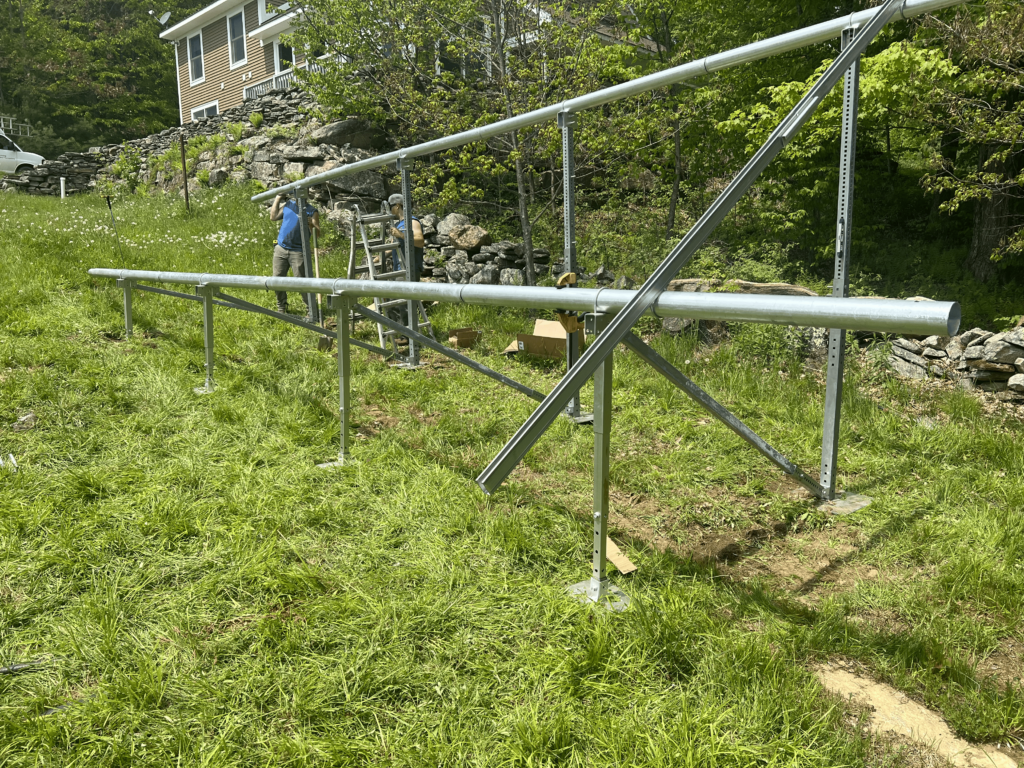Maximizing Solar Efficiency: An In-Depth Look at Racking Systems
In the ever-evolving world of renewable energy, solar power remains at the forefront of sustainable solutions. As more homeowners and businesses transition to solar energy, the importance of effective installation methods becomes increasingly apparent. One crucial element in solar installations is the racking system, which supports the solar panels and plays a significant role in maximizing energy output. This article delves into various racking solutions, including ground mounted racking, ballasted ground mount solar, fix tilt racking, low cost solar racking, and single axis tracker systems, helping you understand their functionalities and benefits.
Understanding Solar Racking Systems
Racking systems are the backbone of solar installations, providing support and stability to solar panels. Choosing the right racking solution is essential for optimizing solar energy production while ensuring durability and ease of maintenance. Different types of racking systems cater to various needs, project sizes, and budgets.
Ground Mounted Racking
Ground-mounted racking systems are popular for larger solar installations, particularly in areas with ample land. These systems are installed on the ground rather than on rooftops, allowing for greater flexibility in design and positioning.

Advantages of Ground-Mounted Racking
- Scalability: Ground-mounted systems can accommodate larger arrays, making them ideal for commercial solar farms or expansive residential setups.
- Ease of Access: Maintenance and inspections are generally more manageable with ground-mounted systems because they are easier to access than rooftop installations.
- Optimized Orientation: These systems can be adjusted to maximize sun exposure throughout the year, ensuring panels capture the most sunlight possible.
Ground-mounted racking offers a solid foundation for solar installations, providing stability and reliability while allowing for optimal energy capture.
Ballasted Ground Mount Solar
Ballasted ground mount solar systems utilize weights (or ballast) to secure solar panels in place, eliminating the need for deep foundation work. This type of racking system is particularly beneficial in areas where soil conditions may not support traditional mounting methods.
Benefits of Ballasted Ground Mount Solar
- Reduced Installation Costs: Using ballast instead of concrete foundations can make installation quicker and less expensive, making it a cost-effective solution.
- Site Flexibility: These systems can be installed on various surfaces, including gravel, asphalt, and even rooftops, without penetrating the surface.
- Easier Relocation: Ballasted systems can be dismantled and relocated relatively quickly, providing flexibility for future site changes or upgrades.
This innovative racking solution is an excellent choice for those seeking a reliable yet flexible approach to solar panel installation.
Fix Tilt Racking
Fix tilt racking is a straightforward solution for mounting solar panels at a fixed angle. This system mainly benefits users who prefer simplicity and reliability in their solar installations.
Key Features of Fix Tilt Racking
- Cost-Effective: Fixed tilt systems are generally less expensive to install and maintain than more complex racking options, making them attractive for budget-conscious projects.
- Stability: With no moving parts, these systems are designed to withstand harsh weather conditions, ensuring long-lasting performance.
- Simplicity: The design and installation processes are straightforward, making it easier for installers to complete the job efficiently.
For homeowners and businesses looking for a dependable and low-maintenance solution, fix tilt racking offers a practical choice for solar panel installation.
Low Cost Solar Racking
Low cost solar racking options are designed for those who want to minimize upfront investment while benefiting from solar energy. These systems prioritize affordability without compromising quality.
Features of Low Cost Solar Racking
- Affordable Materials: Many low-cost racking systems are made from less expensive materials while maintaining the structural integrity required for solar installations.
- Simplified Design: These racking systems often feature simpler designs, reducing manufacturing and installation costs.
- Access to Solar Energy: Low-cost racking systems provide budget-friendly options, helping more people access solar energy and contributing to the broader adoption of renewable energy solutions.
Low-cost solar racking solutions can make solar energy more accessible for those on a budget, ensuring that everyone has the opportunity to invest in a sustainable future.
Single Axis Tracker
Single-axis trackers represent a more advanced option for solar installations. They allow solar panels to pivot on a single axis throughout the day, enabling them to follow the sun’s trajectory and optimize energy production.
Advantages of Single Axis Trackers
- Increased Energy Production: By continuously aligning with the sun, single axis trackers can enhance energy capture by 20-30% compared to fixed systems.
- Efficient Land Use: These systems can generate more energy per square foot, making them ideal for areas with limited space.
- Smart Technology: Many single-axis trackers have advanced monitoring systems that automatically adjust the panels’ angle for optimal performance.
For large-scale solar installations that aim to maximize output, single-axis trackers offer a compelling solution that enhances overall energy efficiency.
Conclusion
Selecting the right racking system is critical in optimizing solar energy production. Whether you opt for ground-mounted racking, ballasted ground-mount solar, fix-tilt racking, low cost solar racking, or a single-axis tracker, understanding the features and benefits of each system can help you make informed decisions about your solar investment. By prioritizing the right racking solutions, you can ensure that your solar installation operates at peak efficiency, contributing to a sustainable and renewable energy future.
